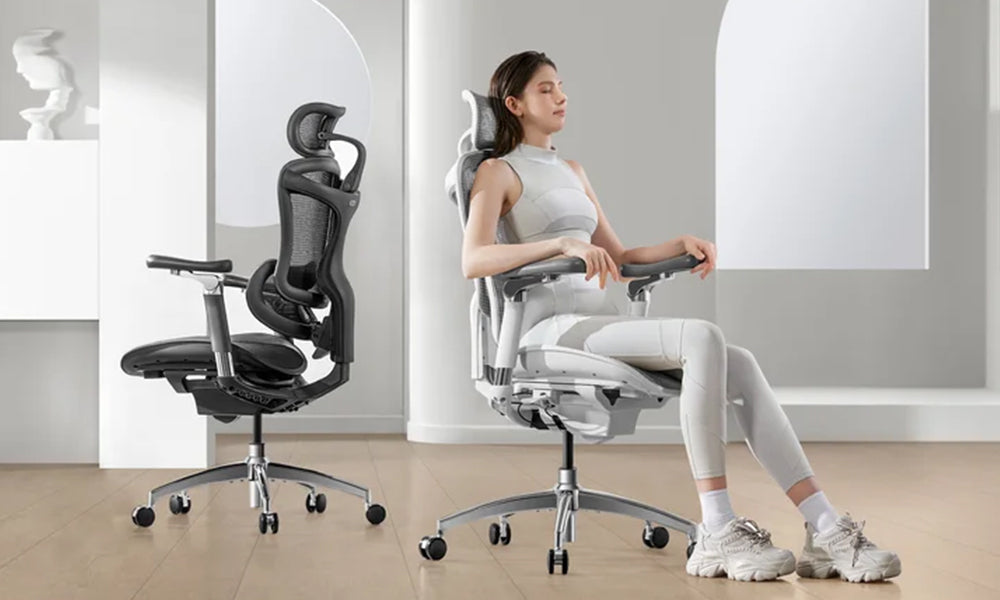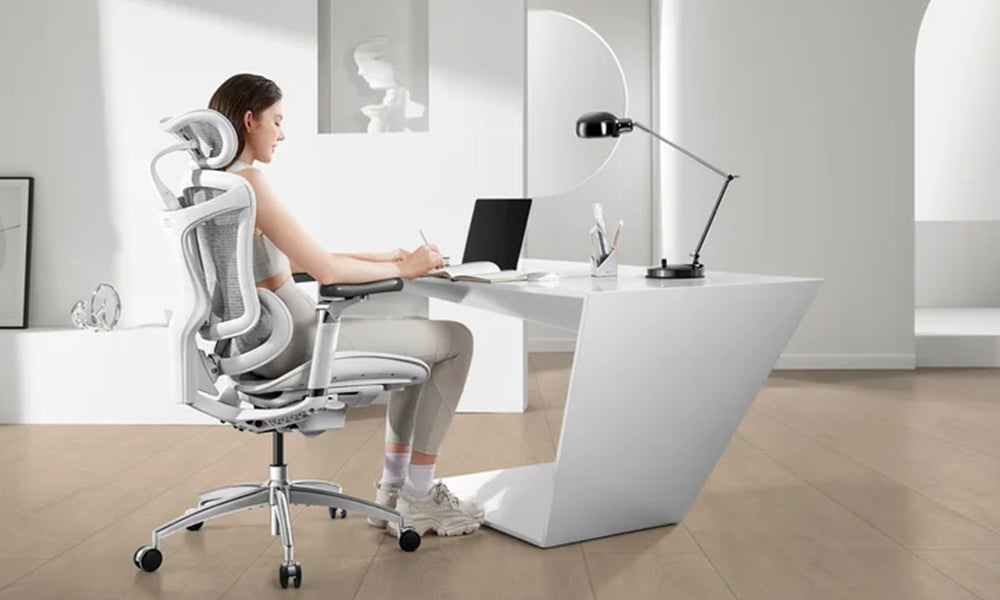Office chairs are an essential part of our workspaces, offering comfort and support during long hours of work. One of the key features that contribute to the comfort of an office chair is its tilt mechanism. Tilt mechanisms allow users to adjust the angle and position of the chair, providing ergonomic benefits and enhancing overall comfort. In this article, we will explore the different types of tilt mechanisms found in office chairs, how they work, and the advantages and disadvantages of each. Understanding these mechanisms can help you make an informed choice when selecting the right office chair for your needs.
Synchro-Tilt Mechanism
The Synchro-Tilt mechanism is one of the most popular and widely used tilt mechanisms in office chairs. It is designed to synchronize the movement of the seat and backrest, maintaining the correct angle between them as you recline. This ensures that your body remains in a comfortable and supportive position as you move.
How it works:
When you recline in a chair with a Synchro-Tilt mechanism, the backrest tilts backward while the seat tilts slightly forward.
This synchronized movement helps maintain the natural "S" curve of your spine, reducing the pressure on your lower back and improving your posture.
Some Synchro-Tilt mechanisms allow you to lock the backrest at various angles or provide tension control to adjust the resistance when reclining.
Advantages:
Improved ergonomic support: The Synchro-Tilt mechanism promotes a healthy sitting posture by keeping your spine properly aligned.
Comfort: Users can recline and work for extended periods without feeling fatigued.
Flexibility: It offers a balance between comfort and task-related activities.
Disadvantages:
Cost: Office chairs with Synchro-Tilt mechanisms can be relatively more expensive than chairs with simpler mechanisms.
Complexity: Some users may find it challenging to get used to the synchronized movement of the seat and backrest.
Knee-Tilt Mechanism
The Knee-Tilt mechanism is another common type of tilt mechanism found in office chairs. It is known for its smooth and comfortable reclining action, and it keeps the user's feet flat on the floor while reclining.
How it works:
In a chair with a Knee-Tilt mechanism, the pivot point is located just behind the knee area.
When you recline, the seat tilts upward, and the backrest tilts back.
The user's feet remain on the ground throughout the recline, providing stability.
Advantages:
Natural recline: The Knee-Tilt mechanism offers a more natural reclining motion compared to some other mechanisms.
Comfort: It allows for a comfortable and supportive recline without lifting the feet off the ground.
Disadvantages:
Limited adjustability: Some Knee-Tilt chairs have limited locking positions, which may not suit every user's preferences.
Price: Chairs with a high-quality Knee-Tilt mechanism can be relatively expensive.
Center-Tilt Mechanism
Center-Tilt mechanisms are commonly found in more traditional office chairs. They allow the user to tilt the entire chair forward from a central pivot point underneath the seat.
How it works:
The chair tilts forward from the center of the seat, lifting both the seat and the backrest simultaneously.
The user's feet may lift off the ground, especially when the chair is tilted forward.
Advantages:
Simplicity: Center-Tilt mechanisms are easy to use and understand.
Affordable: Office chairs with this mechanism are often more budget-friendly than those with more advanced mechanisms.
Disadvantages:
Limited ergonomic support: Center-Tilt chairs may not offer the same level of ergonomic support as Synchro-Tilt or Knee-Tilt chairs.
Feet may leave the ground: This mechanism may not be suitable for users who prefer to keep their feet flat on the floor while reclining.
Multi-Tilt Mechanism
Multi-Tilt mechanisms, also known as 2-to-1 tilt mechanisms, provide users with more control over the chair's tilting options. These chairs often have separate adjustments for the seat and backrest, allowing for a customized sitting experience.
How it works:
The seat and backrest can be adjusted independently, providing greater control over the chair's position.
Users can tilt the seat backward while keeping the backrest upright or adjust the backrest without affecting the seat's position.
Advantages:
Customization: Multi-Tilt chairs offer a high level of customization to suit various user preferences.
Ergonomic support: Users can fine-tune the chair to provide optimal support for their unique needs.
Disadvantages:
Complexity: The multitude of adjustment options may be overwhelming for some users.
Cost: High-quality chairs with Multi-Tilt mechanisms can be more expensive.
Swivel-Tilt Mechanism
Swivel-Tilt mechanisms are commonly found in executive and high-end office chairs. They allow the user to swivel the chair, tilt the seat, and recline the backrest, all in a single motion.
How it works:
The chair swivels, tilts the seat, and reclines the backrest in one fluid movement.
Swivel-Tilt chairs often come with tension control and locking options to adjust the resistance and lock the chair in a preferred position.
Advantages:
Executive comfort: Swivel-Tilt chairs are often associated with luxurious comfort and style.
Versatility: Users can easily switch between different positions with minimal effort.
Disadvantages:
Price: High-quality Swivel-Tilt chairs can be quite expensive.
Learning curve: Some users may need time to become accustomed to the multi-functional controls.
Conclusion
Choosing the right office chair with the appropriate tilt mechanism is essential for your comfort, productivity, and overall well-being at work. Each type of tilt mechanism has its advantages and disadvantages, making it crucial to consider your specific needs, preferences, and budget when making a selection.
The Synchro-Tilt mechanism is a popular choice for those who prioritize ergonomic support and comfort during long working hours. The Knee-Tilt mechanism offers a more natural reclining motion, keeping your feet on the ground. Center-Tilt mechanisms are simple and cost-effective but may not provide advanced ergonomic support. Multi-Tilt mechanisms provide extensive customization options for users who value flexibility. Swivel-Tilt mechanisms offer executive-level comfort and versatility but come with a higher price tag.
In the end, the ideal office chair with the right tilt mechanism is the one that suits your individual requirements and ensures you can work comfortably and productively while maintaining good posture. By understanding the different tilt mechanisms and their features, you can make an informed choice when selecting your next office chair, improving your work environment and overall well-being.




